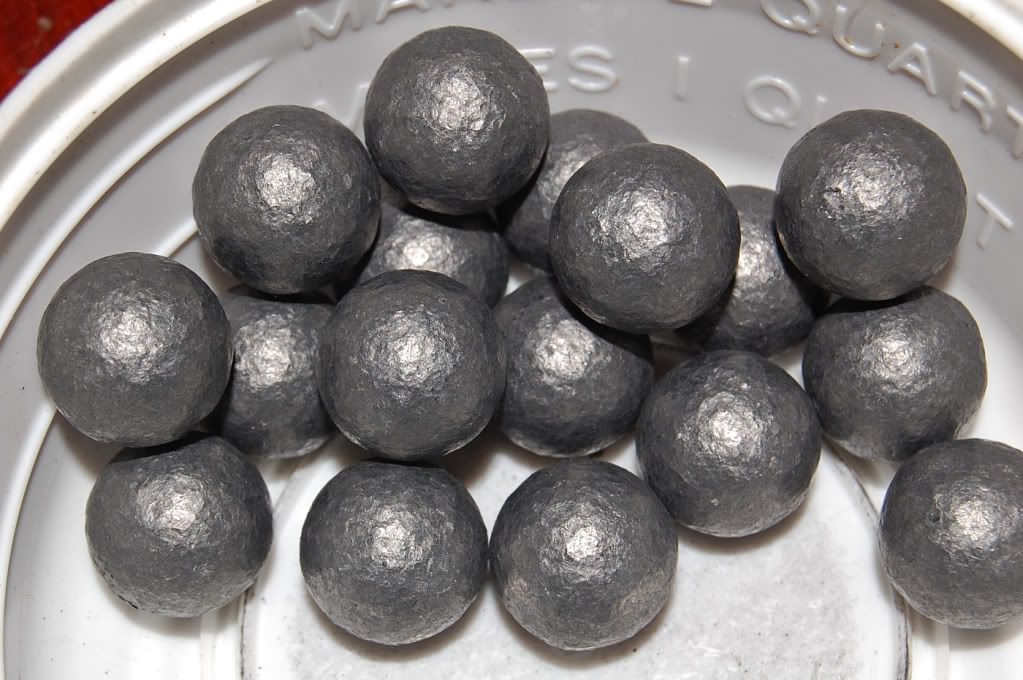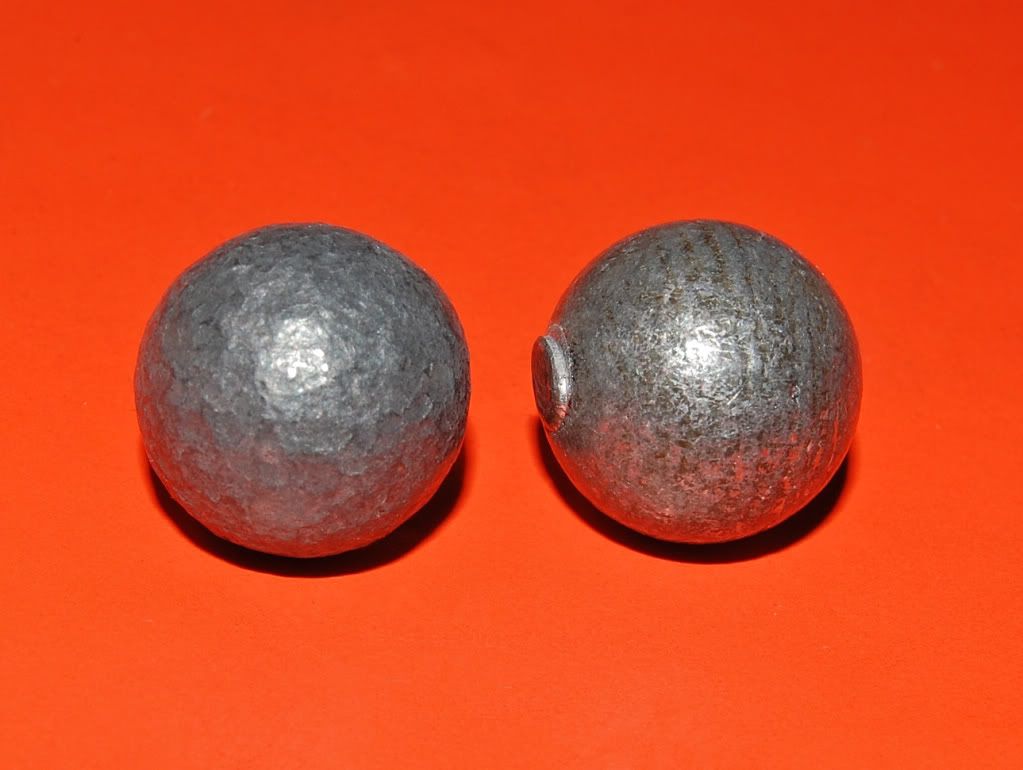Grandpa Ron
45 Cal.
- Joined
- Jan 17, 2011
- Messages
- 571
- Reaction score
- 10
A recent article in Muzzleblast points out the conundrum of shooting a smoothbore.
The author describes switching from a patched round ball to a ball with the sprew removed and the surface stippled on a rasp. If I read correctly the ball was loaded with no patch (bare ball) directly on the powder and his group improved considerably.
I have tested various loads, including patched balls, wads and balls and even bare balls on powder. My results from the bench at forty yards showed very little difference. Most would group the majority of the balls in an 8” circle.
If I understand correctly, the author was using a .715 ball with 48 grains of 3F powder. This is about 2/3 of my 28 ga. load.
Since I have no reason to doubt the authors results; it think it points out the fickle nature of smoothbore shooting.
I was curious if anyone had actually tested a rough surface ball. It is on my to-do list when the weather breaks.
The author describes switching from a patched round ball to a ball with the sprew removed and the surface stippled on a rasp. If I read correctly the ball was loaded with no patch (bare ball) directly on the powder and his group improved considerably.
I have tested various loads, including patched balls, wads and balls and even bare balls on powder. My results from the bench at forty yards showed very little difference. Most would group the majority of the balls in an 8” circle.
If I understand correctly, the author was using a .715 ball with 48 grains of 3F powder. This is about 2/3 of my 28 ga. load.
Since I have no reason to doubt the authors results; it think it points out the fickle nature of smoothbore shooting.
I was curious if anyone had actually tested a rough surface ball. It is on my to-do list when the weather breaks.






